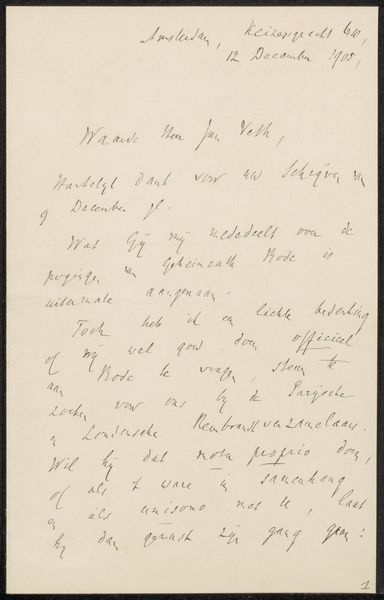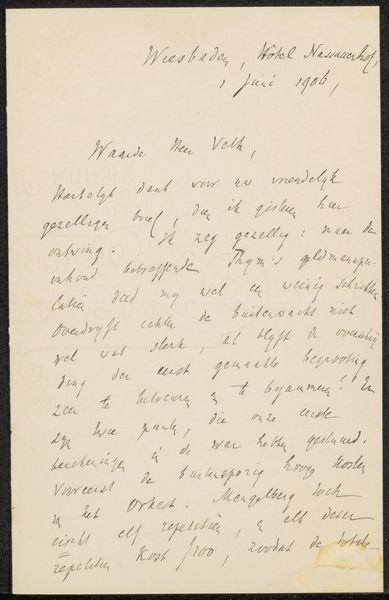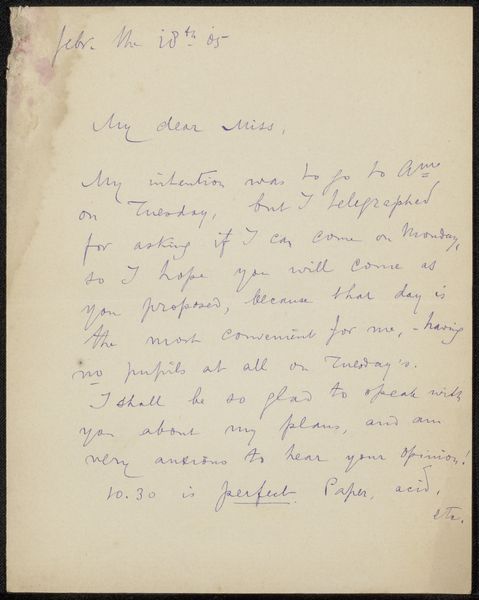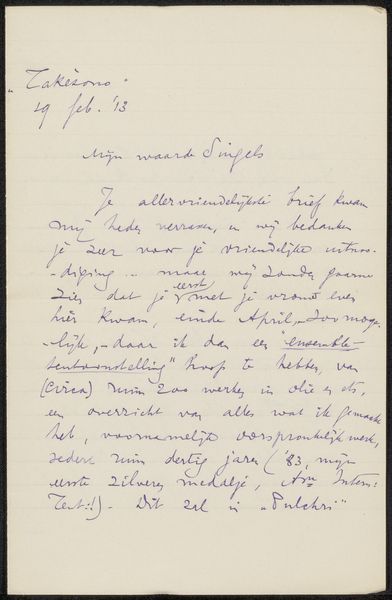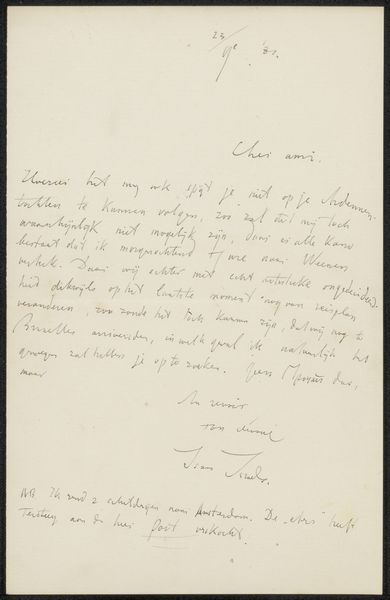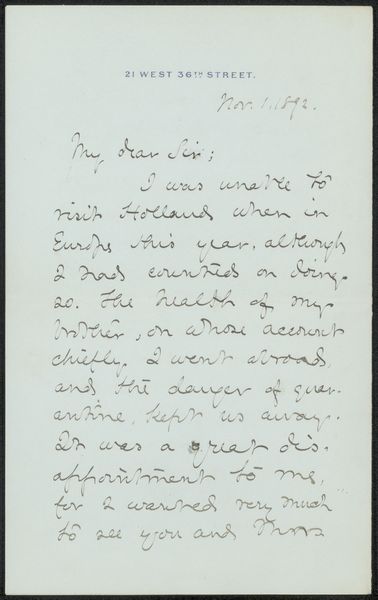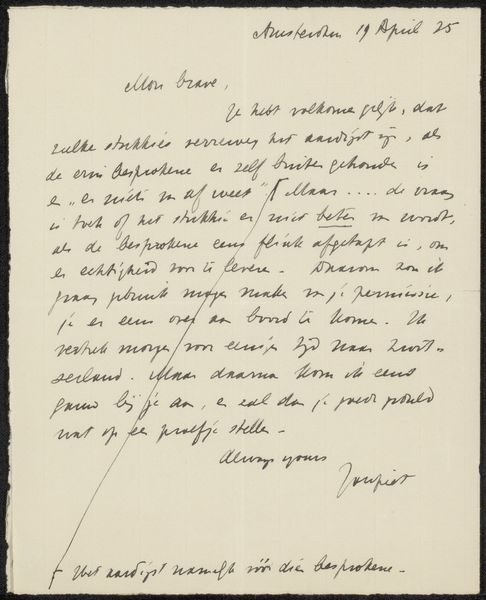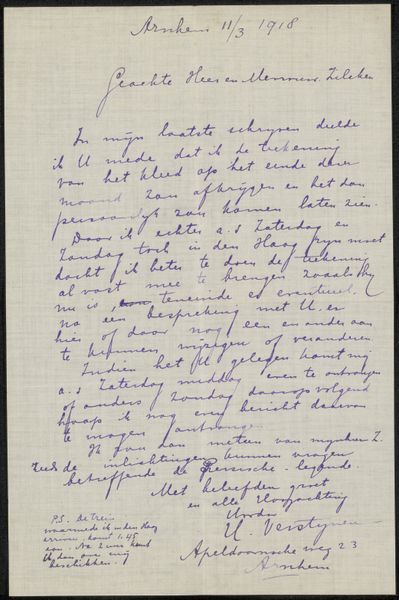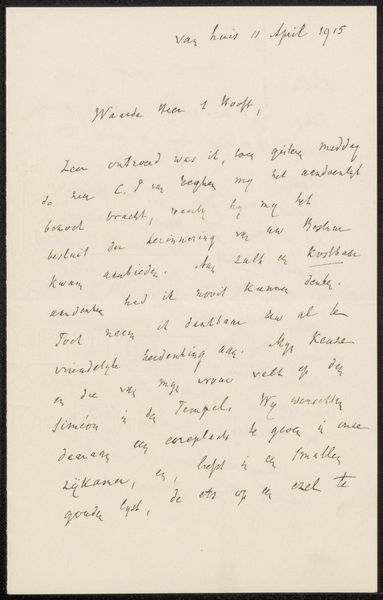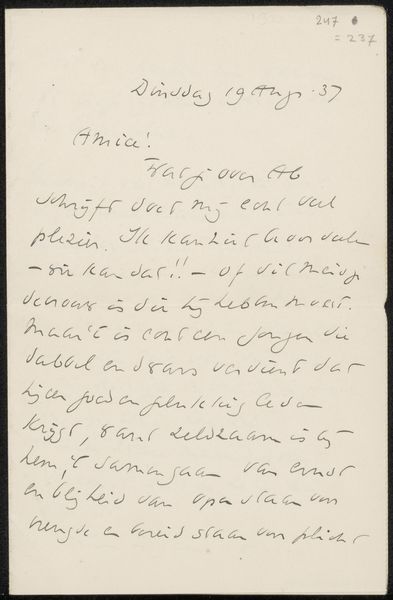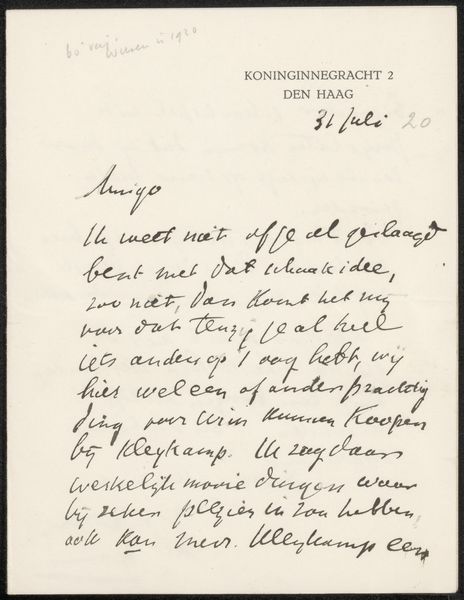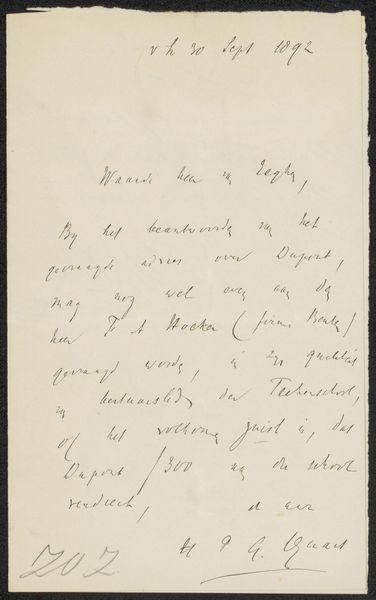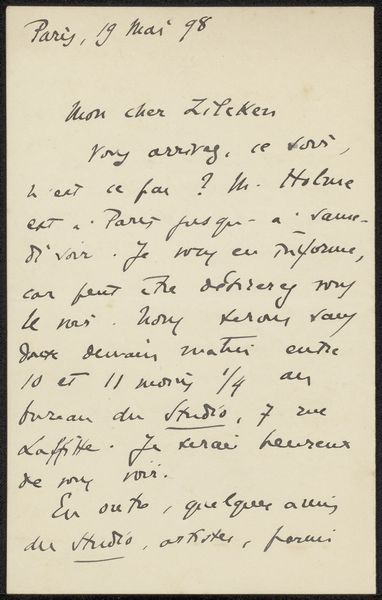
drawing, paper, ink, pen
#
drawing
#
hand-lettering
#
old engraving style
#
hand drawn type
#
hand lettering
#
paper
#
personal sketchbook
#
ink
#
hand-drawn typeface
#
pen-ink sketch
#
ink and pen line
#
pen work
#
sketchbook drawing
#
pen
#
calligraphy
Copyright: Rijks Museum: Open Domain
Editor: This is "Brief aan Jan Veth," possibly from 1908, by Hendrick Peter Godfried Quack. It's ink on paper, so a drawing really, but the focus is very much on the handwriting, the message itself. It feels very personal, almost like we're intruding on someone's private thoughts. What stands out to you in this piece? Curator: The immediate thing I notice is the labour involved. Someone meticulously crafted each letter, line after line. It speaks to a different era, where correspondence was a more tactile, deliberate act. The choice of materials - the ink, the paper - these weren't arbitrary. How do these materials shape our understanding of the letter’s content? Editor: Well, paper and ink were the common materials, easily available for sending letters. Curator: Exactly, and thinking about access to materials brings up the social context. Who had the time and resources for such carefully written communication? Who was Jan Veth, that he would receive such a letter? The letter itself becomes a kind of commodity, an object representing a relationship, and maybe power dynamics. Do you think this relationship dynamic shows itself in the work? Editor: I suppose the elegant handwriting shows the importance, or at least the respect, of the sender towards the recipient, investing time and skill. Curator: Precisely. It encourages me to question, how does the shift to digital communication impact the perceived value and labour of writing? The ease erodes tangible skill and perhaps the genuine sentiment of person-to-person care. Editor: I never thought about a handwritten letter that way, seeing the materials as part of the message, not just a means to deliver it. Curator: Seeing the means of production makes us reflect more on the meaning itself, I think.
Comments
No comments
Be the first to comment and join the conversation on the ultimate creative platform.
